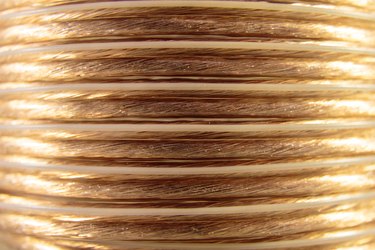
Basic troubleshooting of Yamaha surround sound receivers is easy thanks to the menu. This article goes through the steps on a Yamaha HTR-5660. While your menu may be slightly different, the procedure is basically the same. The menu is only available on Yamaha Surround Sound Receivers manufactured since about 2005. However, there were some high end models manufactured before 2005 that included this menu. If you are unsure, either go to Yamaha's website or look in your owners manual to see if your receiver has the menu option installed. www.yamaha.com/yec/home.html?VNM=LIVE You should have already connected all your home theater devices such as a DVD, VCR, Satellite Box, etc, to your receiver. Buttons: The locations may be different on your receiver. The labels are under the actual buttons, each button has a dual function, with its primary function labeled above the button and its secondary function labeled under the button. We are using the secondary functions of the buttons. NEXT - Located in the center of a group of six buttons on the front panel. From this point on, referred to as NEXT. SET MENU - Two buttons located to the far right of the same group of six.
Troubleshooting No Sound Using the Menu
Video of the Day
Step 1
Turn off all devices, except for the receiver. Select any of the audio video inputs.
Video of the Day
Step 2
Then, select the Basic Menu. On the HTR-5660, this is done by pressing NEXT once. If you pressed the button more than once, just keep pushing it until the words Basic Menu appear on the display.
Step 3
Press the Set Menu button until 1 Setup is displayed on the screen; then, press NEXT. Room size should now be on the display. Use the Set Menu Buttons to select your room size.
Step 4
Press NEXT, and if you have a subwoofer connected to the receiver, use the Set Menu Buttons to select YES. If you do not have a subwoofer, then skip this step.
Step 5
Press NEXT again, and use the Set Menu Buttons to select the total number of speakers you have attached to your receiver; then, press NEXT.
Step 6
The words SET and Cancel are displayed, with an arrow pointing to Cancel. Use the Set Menu Buttons to move the arrow to SET.
Step 7
Press NEXT and the receiver will start sending test tones to each of your speakers. It will only cycle through all the speakers twice. As it sends the test tone to a speaker, a small icon on the display will flash showing which speaker is being tested. If you do not hear the test tone coming from a speaker under test, then note it and wait for the receiver to complete the test. At the end of the test, you will see CHECK OK? YES. If you did hear the test tone in all the speakers select YES and go to step 10. If you did not hear the test tone in all the speakers go to the next step.
Step 8
If you failed to hear a test tone from any speaker, then use the Set Menu Buttons to select NO and press NEXT. It will now send test tones to your Left and Right speakers. If you hear the test tone in each speaker, press NEXT to cycle through the next set. Repeat this until you have tested all of your speakers. At the end, 2SP Level will be on the display. Press NEXT again to get back to the Basic Menu.
Step 9
If you did not hear a test tone out of any of the speakers, check all your speaker wire connections. This includes checking the physical connections at the back of the receiver and on the back of the speaker; then, check the speaker wire to be sure it has not been damaged or cut in any way.
Step 10
This completes the available audio trouble shooting using the menu on the receiver. If you are still experiencing problems, then continue to the next step.
Step 11
If you are still having trouble, double check all your connections. Ensure that all cables are connected to the correct input jacks on the receiver for each device and that each cable also originates from the correct device. It is easy to get in to a hurry and connect the cables to the wrong input jacks.
Step 12
If problems persist, then the receiver needs to be taken to an authorized service center for more extensive testing.